Garden Menaces: 6 Garden Pests and Prevention Methods
Garden Menaces: 6 Garden Pests and Prevention Methods
Owning a large garden is one of the best parts of having a backyard. You can plant a wide variety of plants, flowers, and crops to enjoy during the warm seasons. It can be as decorative or as functional as you want, and all it consistently requires is some water, sunlight, and a little love. But one thing gardens don’t need is a pest infestation. Beneficial insects do help plants to grow and remain healthy in the face of natural and environmental adversity. Bees, butterflies, ladybugs, and earthworms all help in different ways, such as pollinating, performing pest control, and reviving the soil. But the pests we are talking about are the ones that actively harm our plants because they enjoy them too, but as food rather than foliage. There are many different kinds of pests that can infest a garden depending on your climate and garden content, but we’re going to focus on some of the most common ones that plague gardens across America. Let’s take a look at six of these pests and some effective prevention methods for just about every kind of garden visitor of the insect variety.
Tomato Hornworm
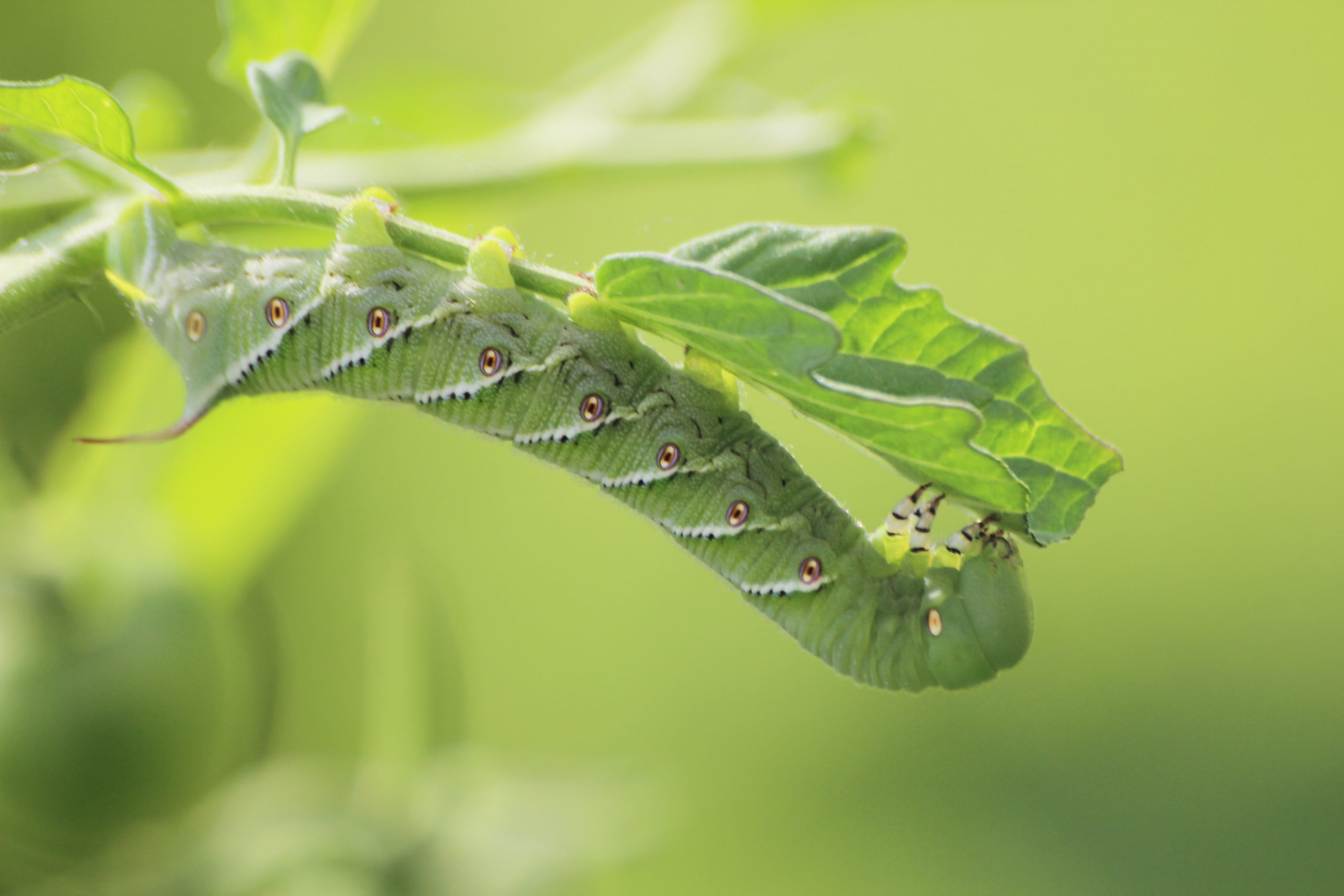
You can probably guess the favorite plant of these children’s-drawings come to life. In addition to tomato plants, tomato hornworms also enjoy eggplants, peppers, and potatoes. These large worms are mainly green with some yellow and white markings, the largest variety showing off white Vs across their body. This helps them to blend in with the leaves, which is how they can escape our gaze when we glance at the plants in our gardens to make sure that they’re healthy. They also have a “horn” on the end of their tail, which is black or red colored. They start on the upper leaves and work their way down the plant, eating through the leaves and leaving holes behind. They also love the fruits on the plants, so they really do some damage to our beloved crops. Tomato hornworms also lay eggs on these plants so that the hatched babies have something to eat as soon as they are welcomed into this world. The last stage of their wormy-life is the time when they eat the most, which is probably why they grow into such large worms.
There are many different kinds of prevention methods you can use to prevent the introduction of these critters that we will discuss later, but for now, the easiest way to get rid of them is to simply pluck them off of the leaves when you find them. They’re so big that you won’t have a problem finding them once you look closely at the plants.
Spider Mite
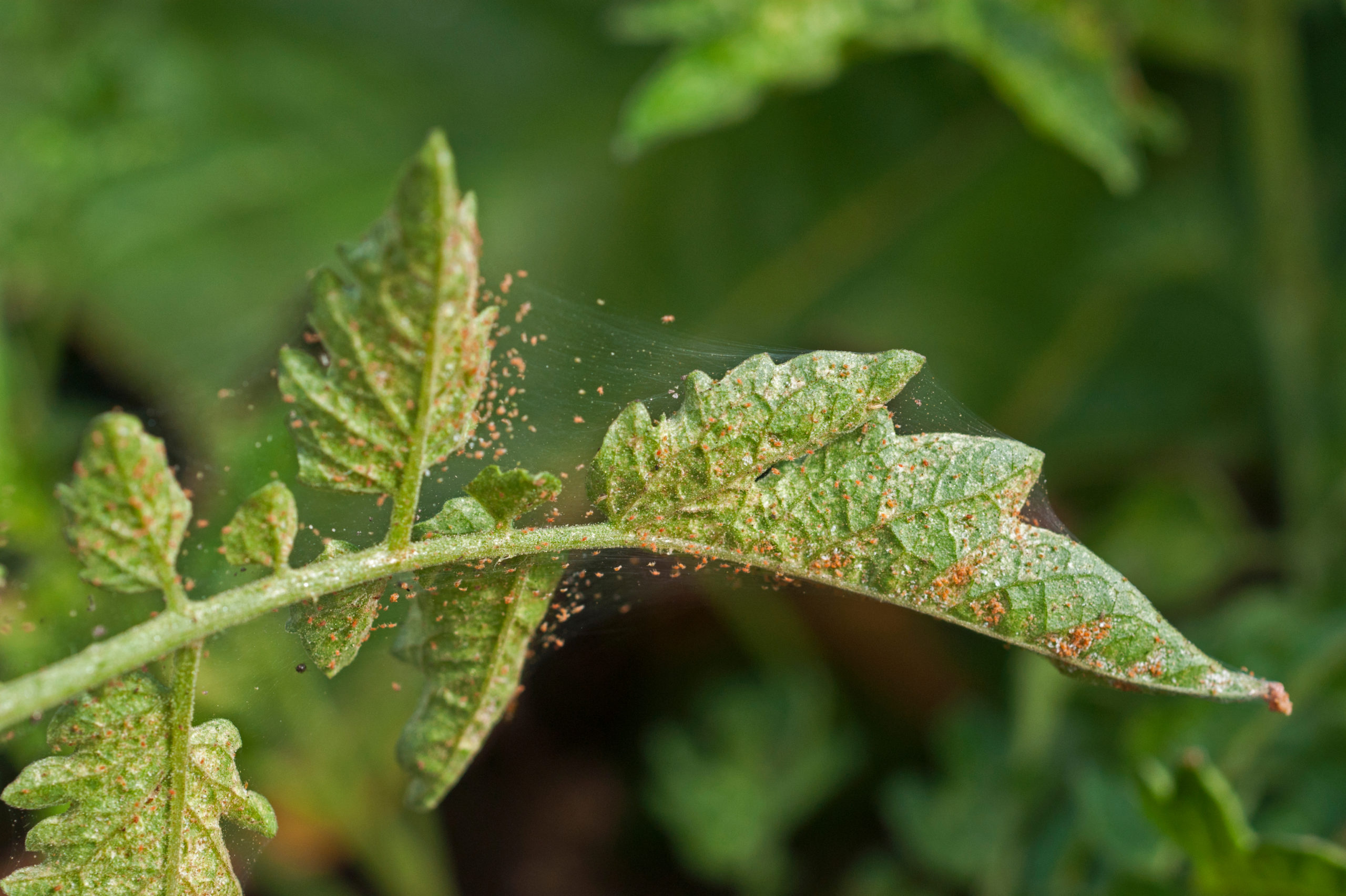
These appropriately-named tiny pests are two nuisances in one. Spider mites are small red pests that drink the juice from plants, enough to eventually drain the leaves of life. As if this weren’t enough, they leave lots of small webs under the leaves to make the garden look like the featured decoration of a haunted house. Since spider mites like to stay underneath leaves, they can go unnoticed for weeks. This is why it’s so important to inspect every part of the plant when you do some yard work. The tops of the leaves might look great while the undersides are covered in mooching pests. Spider mites favor dry climates, so really humid gardens probably won’t experience a booming population of these pests. But they can also live off of plants that have been overwatered, so it’s important to be in a sweet spot in the middle with watering the garden.
Since they are so tiny, spider mites get around by floating on wind currents and staying on the plant they land on. This is why it may be difficult to completely prevent spider mites from invading your garden, since one windy day could be just the invitation they needed. But it may be helpful to note that you would not be the only one looking for these pests. Spider mites have many natural predators that may take care of them before you even see them on your plants. Their most common enemies include ladybugs and praying mantids, both of which also eat other tiny garden pests. So these insects are two visitors you definitely want to keep around, should they find their way to your garden.
Cutworm
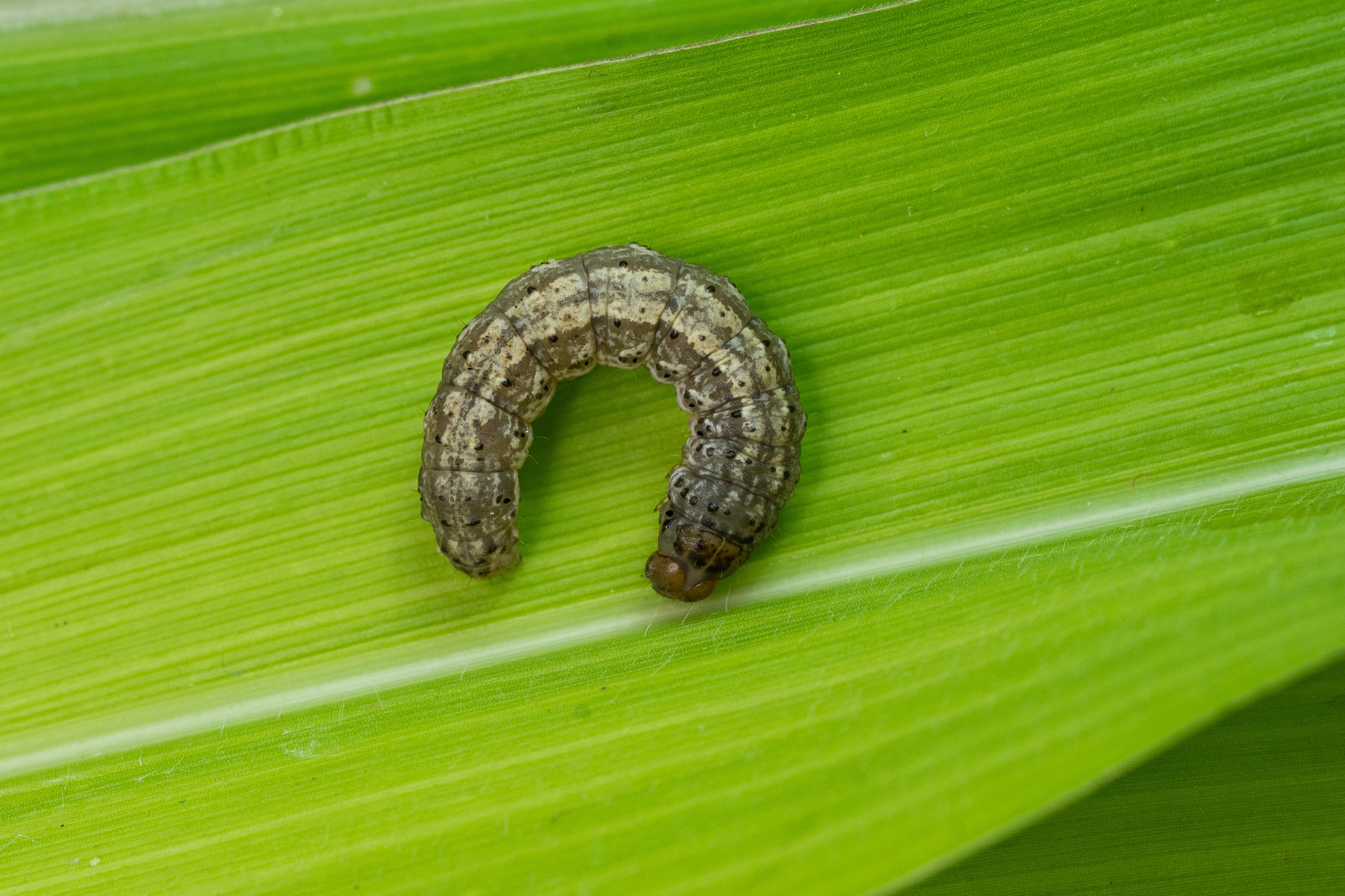
Earthworms may be extremely helpful in reviving the soil, but some of its worm cousins are more destructive than beneficial. Cutworms are not technically full worms; they are actually moth larvae that gets pretty big considering its species. They eat the most in May and June, so the late spring is the most active time for these pests. Cutworms are another pest that hide underneath the leaves of a plant, so make sure to check under those for any unwanted guests. They also hide in the topsoil, which is the uppermost layer of the soil. Cutworms favor typical garden crops and young seedlings, so nothing is safe from these creepy larvae. They mainly attack the stems if only because it’s the first part of the plant that they run into in proximity to their homes.
To make things even more fun (not!), cutworms are nocturnal and feed at night. This makes sense since moths are nocturnal, so of course their larvae would be too. So you probably won’t see too many hanging out during the day, but it is possible to come out to your garden in the morning and find some of your seedlings toppled over because their support system was attacked. If you are lucky enough to find a cutworm in action, they are big enough that you can just pick it off the plant by hand. You can also wait just a little longer to plant any new seedlings so that they are sturdy enough to withstand the bites of a cutworm and other persistent pests.
Slug
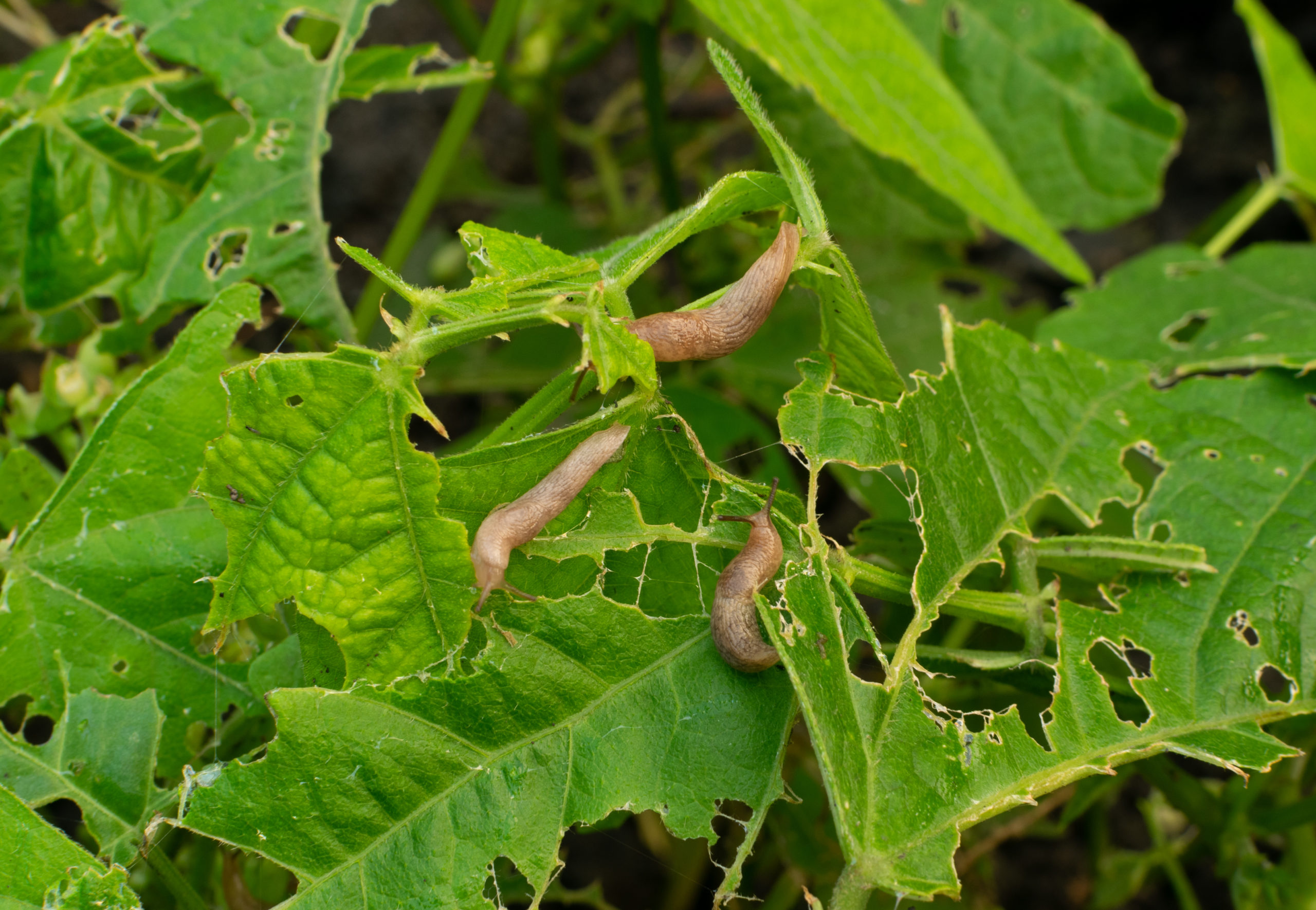
Slugs are subjectively one of the grossest pests to deal with. They are constantly slimy and can be unnervingly large, which is never a quality you want with a pest. Slugs (and snails) aren’t insects; they are actually mollusks, and more specifically, gastropods. Slugs are visually different from snails due to their lack of shell. Slugs are usually about one inch long, and are most abundant in moist, humid, and wet areas. This is because they literally need moisture to survive, as well as retain their slimy texture. Slugs are nocturnal and do their feeding at night, so they’re another pest that you will find evidence of their meals the next day. And to make matters worse, slugs will eat just about anything. They enjoy vegetation, fungus, and even worms!
In addition to their creepy look, you also don’t want slugs around because they cause so much destruction to a garden. They are especially abundant after a large rainstorm since everything is drenched to their liking. It may be helpful to do a patrol of the garden post-storm and search for any hidden slugs and snails. To prevent slugs from crawling up to your plants, try sprinkling hard materials around the base of the plants. Sharper pieces of sand and seashells are some of the more effective tough materials that keep slugs away, at least for a little while. Slugs may look harmless, but they are a garden’s worst enemy.
Snail
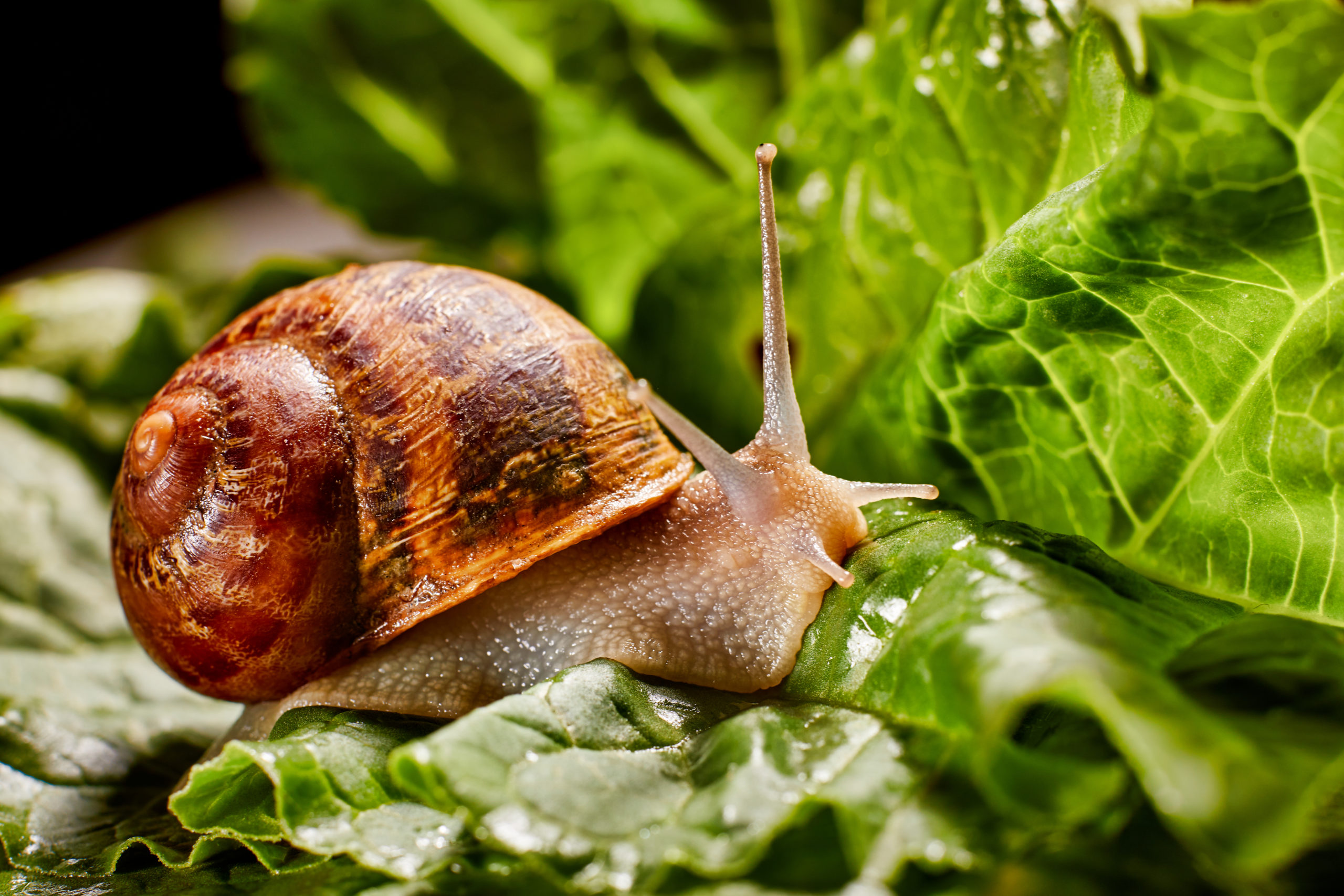
Speaking of worst enemies, snails are detrimental to a garden for the same reasons. They cause the same kind of damage to and problems for a garden as slugs. Snails also eat a wide variety of plants, but their favorites seem to be marigolds and green vegetables. The only major difference between the two gastropods is that snails have protective shells that they can retreat into for sleep and protection. They aren’t invincible to humans or large mammals this way, but it does help protect them against insect predators. This is why snails spend so much time in the actual soil around the plants; they need the calcium to build up the durability of their shells. You will know that your pest problem is a snail or slug problem if you see both mucus trails and large holes in plant leaves. The mucus is the most obvious sign, since their muscular foot secretes it everywhere they go.
Another downside to having snails around is that both male and females can lay eggs, which means that the snail population can go from 1 to 100 very quickly. And since snails can overwinter in their shells to survive, there is little hope that the cold weather will get rid of them. The easiest solution for these mollusks is the same as the slugs. Pick them off of plants when you find them, and place some sharp organic materials around the base of plants. With rainstorms comes mollusks, so make sure to scour the garden afterwards for any pests that came in with the rain.
Aphid
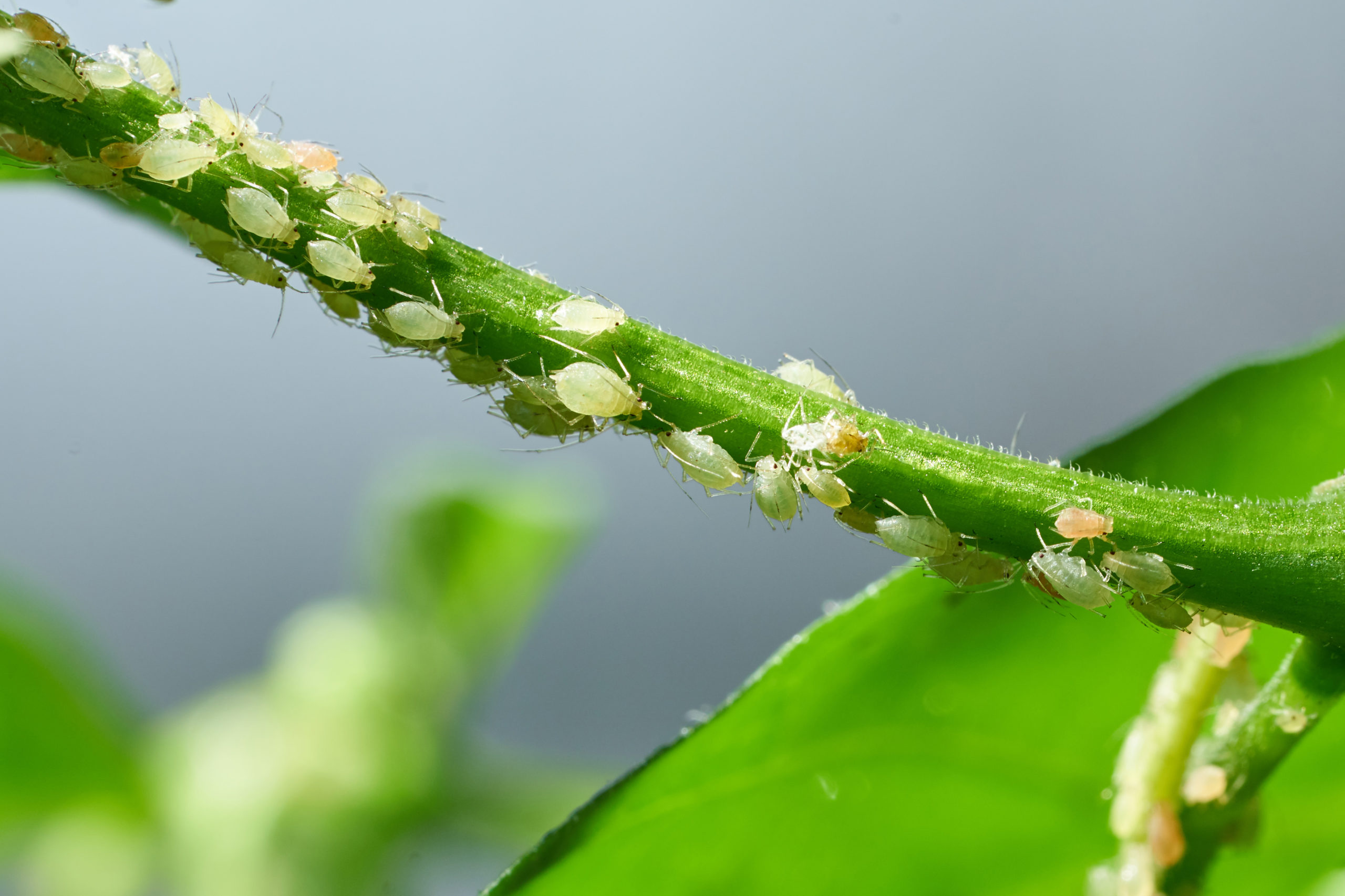
These are one of the more popular garden pests in the world, and by popular, we mean “somehow finds their way into every garden, no matter how hard we try to make them stay away.” Aphids are small pests that cause problems for any unfortunate plant that happens to house these insects for a time. They drink sap from plants by stabbing holes in the plant tissue, which is why we find tons of little holes after aphids have been around. This causes the plants to stop growing and the leaves to curl up, since their vital material has been extracted. A big problem is that aphids carry viruses detrimental to plants, so the leaves will be attacked in more than one way when aphids are involved. Another major problem that aphids cause, besides the aforementioned leaf-holes, is that they secrete honeydew (not the fruit). This secretion is basically their waste, and they constantly produce it since they are always eating. But honeydew isn’t gross to every organism like it is to us. It attracts a sooty type of mold, as well as ants. Ants like to eat the honeydew, but they will quickly begin hunting for another kind of food when that runs out. This means a whole different pest problem for you, not to mention the ruin of your poor plants.
Aphids can also be controlled by beneficial pests that enjoy the taste of smaller pests. Ladybugs are famous for loving aphids, so it wouldn’t hurt to keep some ladybugs around if you continue to experience an aphid problem. Constantly checking the leaves and spraying them with water also helps to get rid of any surviving aphids before it’s too late for your garden.
Prevent the Pests and Protect Your Garden!
While there are specific methods for preventing some pests that we mentioned earlier, there are some general tactics you can use to keep the garden bed as pest-free as possible. One positive method is to plant pest-repellent greenery. There are many different types of plants that naturally repel pests due to their pungent scents. Most common herbs, including basil, mint, rosemary, and thyme, drive pests away for this reason. Plus, you get some fresh herbs out of the experience! There are also some beautiful flowers that repel pests, which would add a splash of color throughout the garden. Petunias, marigolds, lavender, and chrysanthemums all contain natural chemicals, like pyrethrum and limonene, that repel different kinds of harmful pests and allow the greenery to grow.
A less-exciting method is to spray all the plants with water. Not only with the plants appreciate the blast of cool water, it will be enough to spray any small pests away. It will also wash away any eggs or webs that have latched onto the plant, since they would not be strong enough to withstand the force of water. If you see any large pests, like tomato hornworms or snails, you can pick them off by hand. This is the easiest way to get rid of the current plant foes without treating the whole garden. Placing certain materials in the garden also helps to repel pests of all sizes. Shiny things like tinsel repels birds, while salt and flour are detrimental to ground-dwelling pests. By researching the specific pest plaguing your garden, you will likely find a DIY garden decoration to effectively repel the pest.
Picking weeds is not the most fun task in the world, but it is productive for a few reasons. For one, it saves your plants and allows them room to thrive without being inhibited by pesky weeds. It also makes your garden look more picturesque in general, as your herbs and flowers look beautiful without spiky weeds getting in the way. But the pest-focused reason is that some insects lay their eggs on weeds, which gives them a direct link to the nearby plants for their food source. Picking weeds as you see them is easier than leaving them to collect, giving pests a chance to infest the area, and picking a ton all at once. There are also plenty of weed killers on the market that can treat the weeds without harming your greens.
But as always, pest control services is a valuable option for saving your garden from uninvited pests. Our team is always ready to solve your pest concerns and provide you with the pest-free garden of your dreams. Contact us to learn more about our EPA-approved treatments and thorough pest inspections. Your garden should be bountiful in producing beautiful plants and flowers, not an army of pests.
Citations
All you need to know about slugs and snails. (n.d.). Corry’s. Retrieved May 18, 2022, from https://www.corrys.com/resources/slugs-and-snails-all-you-need-to-know
Francis, M. (n.d.). Controlling aphids, slugs and snails. HGTV. Available at https://www.hgtv.com/outdoors/gardens/planting-and-maintenance/aphids-slugs-and-snails-oh-my-keep-bugs-out-of-the-garden-naturally (Accessed on May 18, 2022).
Godfrey, L.D. (2011, December). Spider mites. UC IPM. Available at http://ipm.ucanr.edu/PMG/PESTNOTES/pn7405.html (Accessed on May 18, 2022).
Hahn, J. (2020). How to identify hornworms. University of Minnesota Extension. Available at https://extension.umn.edu/yard-and-garden-insects/tomato-hornworms (Accessed on May 18, 2022).
Kasch, A. (2022, March 28). 8 of the worst garden pests you should definitely tackle ASAP. Angi. Available at https://www.angi.com/articles/worst-garden-bugs.htm (Accessed on May 18, 2022).
Miller, L. (2022, April 5). How to get rid of the 10 worst garden insects. Family Handyman. Available at https://www.familyhandyman.com/list/10-worst-garden-insect-pests-and-how-to-get-rid-of-them/ (Accessed on May 18, 2022).
The 10 most destructive garden insects and how to get rid of them. (2018, July 10). Good Housekeeping. Retrieved May 18, 2022, from https://www.goodhousekeeping.com/home/gardening/a20705991/garden-insect-pests/
Request a Free Quote Today
(We do not share your data with anybody, and only use it for its intended purpose)


